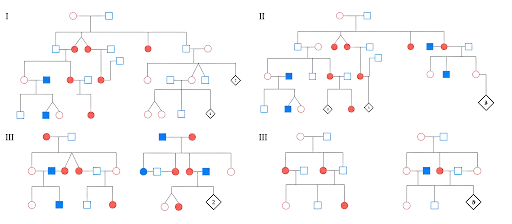What Is a Pedigree Chart? A Beginner’s Guide
Tracing your family’s history can feel overwhelming. With countless names, dates, and connections to track, it is easy to get lost. This is where a pedigree chart comes in. But what is a pedigree chart, and why is it essential for anyone starting their genealogy journey?
At its core, a pedigree chart is a visual diagram of family relationships across generations. It maps ancestors, siblings, and descendants in a clear, organized format. For aspiring genealogists, it serves as a guide, helping uncover connections and patterns that might otherwise remain hidden. Understanding how to use and read a pedigree chart can simplify complex research and bring your family history to life.
Sapling Family, led by Dr. Bradley with over 35 years of experience, specializes in guiding clients through this process. From Great Migration research to uncovering hidden family stories, our bespoke approach ensures every lineage is accurately documented and accessible.
Understanding Pedigree Charts
A pedigree chart is more than just a family tree. It captures the genetic and familial relationships within a family. Using standardized symbols and lines, it offers a visual snapshot of traits, conditions, and ancestry across generations.
Pedigree Chart Definition in Biology
In biology, a pedigree chart illustrates how traits or genetic conditions pass from one generation to another. It helps researchers understand inheritance patterns, whether traits are dominant, recessive, or influenced by multiple genes. While scientists often use pedigree charts for genetic analysis, genealogists use the same principles to trace human ancestry
Types of Pedigree Charts
There are several types of pedigree charts, depending on your goals:
Simple Pedigree Chart: Covers three generations and is ideal for beginners.
Extended Pedigree Chart: Includes aunts, uncles, cousins, and more distant relatives.
Genetic Trait Pedigree Chart: Focuses on specific traits, like eye color, blood type, or medical conditions.
Each type helps visualize relationships and traits, making it easier to interpret complex family histories.
Standard Symbols for Pedigree Charts
Gender:
Square (☐): Male
Circle (⚪): Female
Diamond (◇): Unknown or unspecified gender
Relationships:
Horizontal line between male and female: Marriage or mating
Vertical line from couple: Their children
Horizontal line connecting children: Siblings (listed oldest to youngest, left to right)
Traits and Conditions:
Filled symbol: Has the trait or condition
Empty symbol: Does not have the trait
Half-filled or dot inside: Carrier of a recessive trait
Why Pedigree Charts Matter
Pedigree charts serve multiple purposes, including:
Genealogical Research: They provide a foundation for building comprehensive family trees and uncovering distant relatives.
Medical Insights: Tracking hereditary conditions across generations helps assess health risks and guide preventive care.
Inheritance Planning: Charts clarify family relationships, which is useful for legal matters and estate planning.
Cultural Preservation: They capture family stories, migration history, and traditions, ensuring heritage is passed down.
DNA Integration: Pairing pedigree charts with DNA results reveals deeper insights into genetic ancestry and ethnicity.
Each chart not only documents your family’s past but also strengthens your connection to your roots.
How to Create a Pedigree Chart
Creating a pedigree chart involves careful planning and research.
Gather Information: Collect names, birth and death dates, marriages, and medical histories. Interview relatives and consult records.
Determine the Layout: Decide how many generations to include and which type of chart suits your needs.
Choose a Format: Options include hand-drawn charts, genealogy software, or online platforms.
Build the Chart: Start with yourself at the base and progress upward. Use lines and symbols to represent relationships and traits.
Add Details: Include as much accurate information as possible. Recheck all data to ensure clarity and reliability.
Following these steps helps create a comprehensive chart that reveals patterns and insights that might otherwise remain hidden.
Conclusion
A pedigree chart is an essential tool for anyone exploring their ancestry. By visually mapping family relationships and traits it simplifies genealogy research and strengthens connections with your heritage. With expert guidance from Sapling Family, uncovering your roots becomes a structured and rewarding journey.


